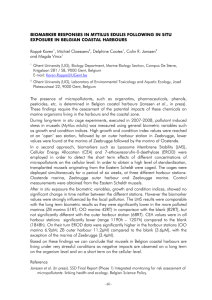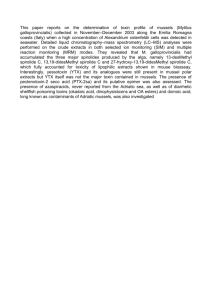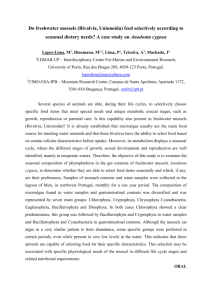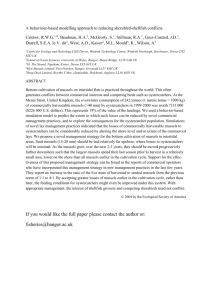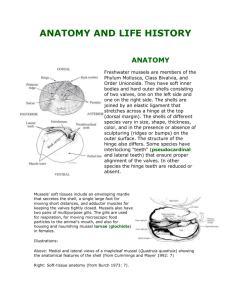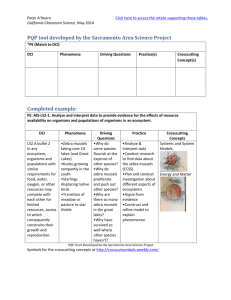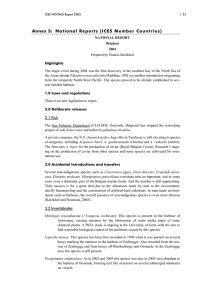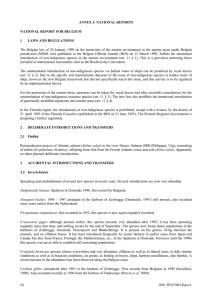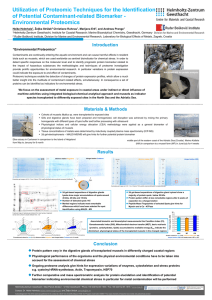USE OF MULTI-BIOMARKER EXPERIMENTS WITH CAGED MUSSELS FOR
advertisement
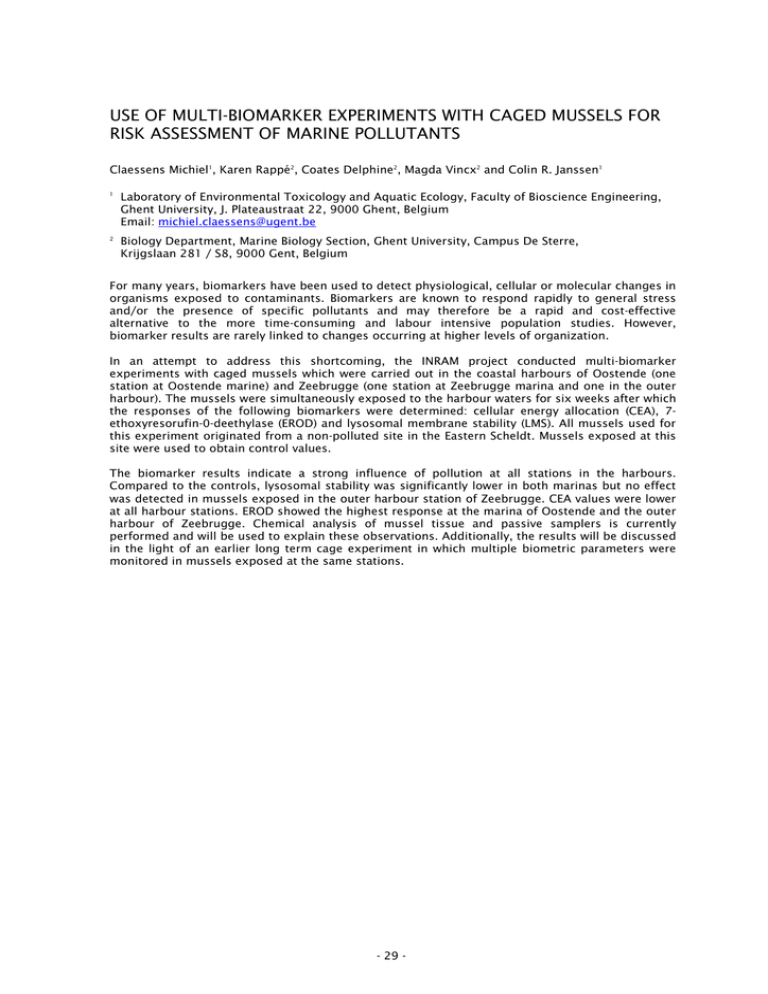
USE OF MULTI-BIOMARKER EXPERIMENTS WITH CAGED MUSSELS FOR RISK ASSESSMENT OF MARINE POLLUTANTS Claessens Michiel1, Karen Rappé2, Coates Delphine2, Magda Vincx2 and Colin R. Janssen1 1 Laboratory of Environmental Toxicology and Aquatic Ecology, Faculty of Bioscience Engineering, Ghent University, J. Plateaustraat 22, 9000 Ghent, Belgium Email: michiel.claessens@ugent.be 2 Biology Department, Marine Biology Section, Ghent University, Campus De Sterre, Krijgslaan 281 / S8, 9000 Gent, Belgium For many years, biomarkers have been used to detect physiological, cellular or molecular changes in organisms exposed to contaminants. Biomarkers are known to respond rapidly to general stress and/or the presence of specific pollutants and may therefore be a rapid and cost-effective alternative to the more time-consuming and labour intensive population studies. However, biomarker results are rarely linked to changes occurring at higher levels of organization. In an attempt to address this shortcoming, the INRAM project conducted multi-biomarker experiments with caged mussels which were carried out in the coastal harbours of Oostende (one station at Oostende marine) and Zeebrugge (one station at Zeebrugge marina and one in the outer harbour). The mussels were simultaneously exposed to the harbour waters for six weeks after which the responses of the following biomarkers were determined: cellular energy allocation (CEA), 7ethoxyresorufin-0-deethylase (EROD) and lysosomal membrane stability (LMS). All mussels used for this experiment originated from a non-polluted site in the Eastern Scheldt. Mussels exposed at this site were used to obtain control values. The biomarker results indicate a strong influence of pollution at all stations in the harbours. Compared to the controls, lysosomal stability was significantly lower in both marinas but no effect was detected in mussels exposed in the outer harbour station of Zeebrugge. CEA values were lower at all harbour stations. EROD showed the highest response at the marina of Oostende and the outer harbour of Zeebrugge. Chemical analysis of mussel tissue and passive samplers is currently performed and will be used to explain these observations. Additionally, the results will be discussed in the light of an earlier long term cage experiment in which multiple biometric parameters were monitored in mussels exposed at the same stations. - 29 -
